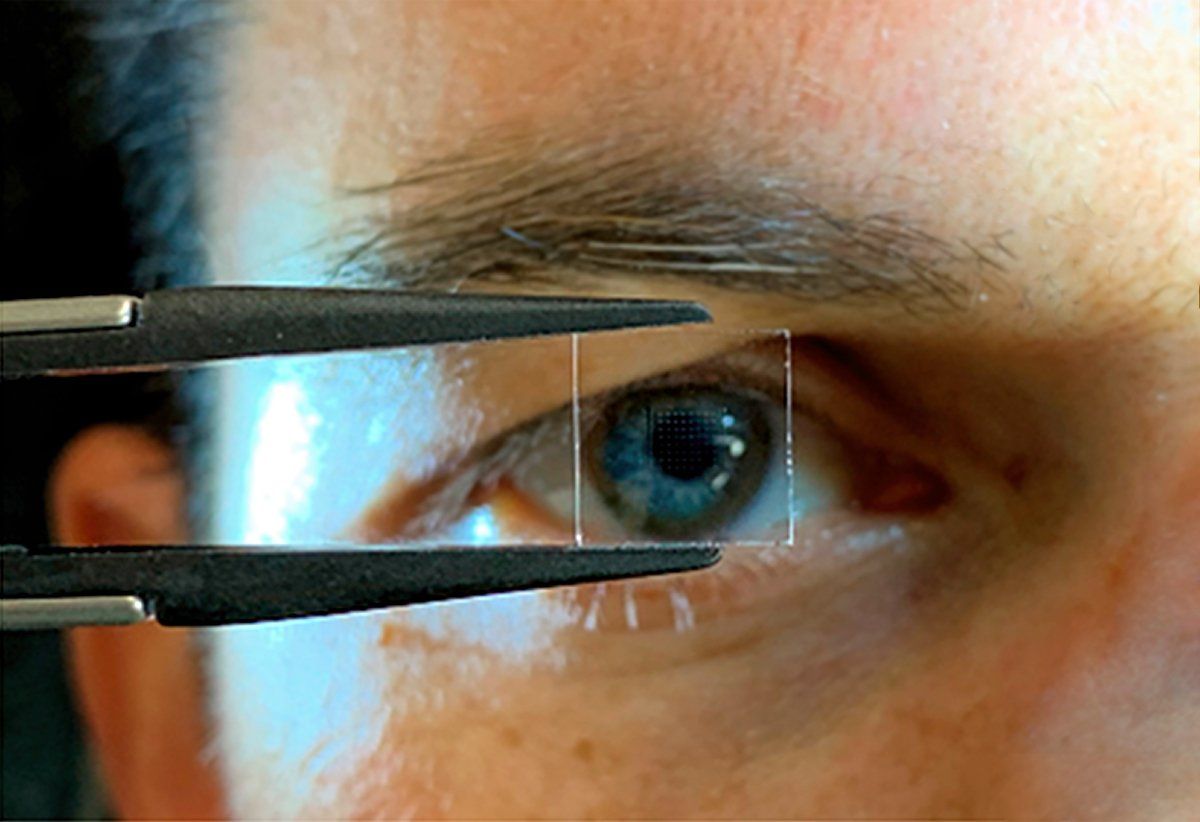The list of applications for eye-tracking technology has grown long in recent years with virtual-reality and augmented-reality devices, systems that make driving safer and more efficient, hands-free control of computers and assistive communication devices, and detection of diseases.
Gaze tracking today relies on bulky, opaque silicon-based image sensors mounted at an angle, away from the user’s direct line of sight to avoid distraction. Now a team of researchers from The Barcelona Institute of Science and Technology and Barcelona-based startup Qurv Technologies have made flexible, nearly transparent image sensors that could be hidden in plain sight.
“You could have phones or laptops where the entire screen is a sensor to detect hand movements. Mirrors or shop windows could have smart sensors and cameras integrated into the glass to sense human gestures.”
—Frank Koppens, Barcelona Institute of Science and Technology
The sensors, made of graphene and quantum dots, could be integrated directly onto eyeglasses or curved windshields, placed right in front of a user’s eyes. This could make eye-tracking hardware less bulky, improve the accuracy of gaze detection, and reduce computational complexity, says Frank Koppens, who co-led the research published in ACS Photonics and cofounded Qurv in 2020.

“Integrating photodetectors into glass is simply not possible with conventional materials,” Koppens says. The semi-transparent sensor could be integrated into glasses, while their readout electronics are placed on the side of the frame. And the see-through image sensor could enable many other uses. “You have to fantasize,” he adds. “You could have phones or laptops where the entire screen is a sensor to detect hand movements. Mirrors or shop windows could have smart sensors and cameras integrated into the glass to sense human gestures.”
Eye-tracking typically involves bouncing infrared light off of the user’s eyes and analyzing the reflected signals with an image-processing algorithm to measure things like eye position, movement, and pupil dilation. The light-emitting diodes and one or more infrared cameras are mounted away from eyesight, say along the top of VR/AR glasses or on the edges or corners of car windshields.
To make semi-transparent image sensors, Koppens, Qurv Chief Technology Officer Stijn Goossens and their colleagues combined the properties of two nanomaterials. Atoms-thick graphene is an excellent conductor, and is also very good at converting photons into electrons and positively charged holes. But it absorbs very little light. On the other hand, quantum dots, which are semiconductor nanocrystals, are excellent light absorbers.
So the team deposited graphene on a clear quartz substrate, and then coated it with an ultrathin layer of quantum dots just a few tens of nanometers thick. The quantum dots absorb photons and pass them on to the graphene, which converts them into voltage.
The graphene–quantum dot photodetectors are about 90 percent transparent. They absorb less light than conventional silicon photodetectors, says Koppens, so their overall performance “can never be at the same level.” But they convert the absorbed light to electrical signal with an efficiency of about 60 percent, he adds, which is “quite high, comparable to conventional silicon photodetectors, and enough for eye tracking.”
Koppens and colleagues first reported such rudimentary photodetectors a decade ago, but both efficiency and scalability have come a long way since then, he says. They now make the photodetectors with graphene grown using common vapor deposition techniques on 300-nm wafers.
As a demonstration, the researchers made an 8-by-8 array of graphene–quantum dot photodetector pixels, each 60 by 140 micrometers in size. The pixels are connected to the signal-processing electronics via wires made of indium tin oxide, a commonly used transparent electrode material. The researchers projected pixelated black and white images on the array and reconstructed them by reading the signals from each photodetector. Most of the patterns could be reconstructed by the array, but the results weren’t perfect.
There’s a lot more work needed to improve performance, Koppens says. Researchers at Qurv now plan to further improve the resolution and speed of the image sensors and develop methods to reliably make them on larger scale.
- Adding An Eye-Tracker To A Mobile Device ›
- Eye-Tracking Glasses Are All You Need to Control This Drone ›
Prachi Patel is a freelance journalist based in Pittsburgh. She writes about energy, biotechnology, materials science, nanotechnology, and computing.



